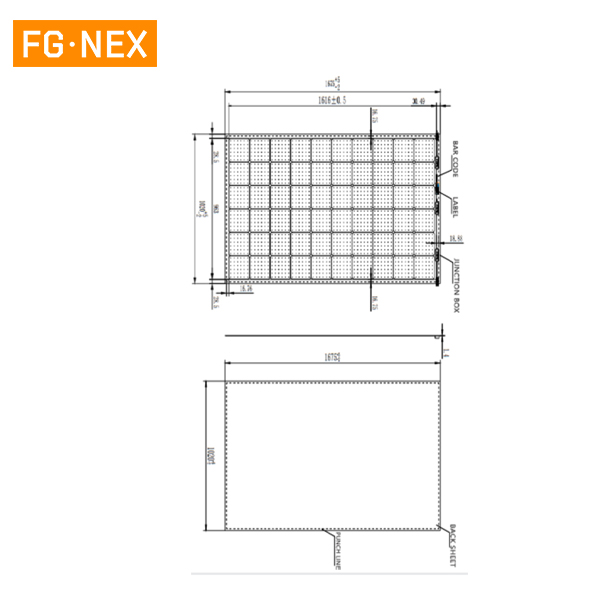As the world moves swiftly towards a sustainable future, the quest for renewable energy sources has never been more critical. Among the myriad of solutions, photovoltaic technology has emerged as a frontrunner, with its capacity to harness the sun's energy and convert it into electricity. However, the traditional rigid and bulky PV panels we've known for decades are giving way to a new era of innovation: the rise of flexible PV modules.
The Evolution of Solar Power
The journey of solar power began with rudimentary solar cells, which have evolved over time into the high-efficiency panels we see today. These advancements have been fueled by the need for clean, renewable energy and the decreasing costs of production. Yet, despite the progress, traditional PV panels have limitations. They are often large, heavy, and require significant structural support, which can be a hindrance in various applications.
Enter flexible PV modules – a game-changer in the solar energy landscape. These innovative modules are lightweight, portable, and can be easily integrated into a wide range of surfaces and structures, from rooftops to vehicles, and even clothing. The flexibility of these modules opens up a world of possibilities for solar energy utilization that were previously unimaginable.

The Advantages of Flexible PV Modules
1. Versatility: The primary advantage of flexible PV modules is their adaptability. They can conform to uneven surfaces and curved structures, making them suitable for installation on buildings with unique architectural designs, tents, and even vehicles. This versatility allows architects and engineers to integrate solar technology seamlessly into their designs, creating aesthetically pleasing and energy-efficient structures.
2. Lightweight and Portable: Traditional PV panels can be cumbersome and heavy, requiring significant installation efforts. Flexible PV modules, on the other hand, are lightweight and easy to handle, making them ideal for portable applications such as charging devices in remote areas or powering electric vehicles.
3. Enhanced Durability: The flexible nature of these modules allows them to better withstand harsh weather conditions. They can bend without breaking and are less prone to damage from wind, hail, or snow compared to their rigid counterparts.
4. Cost-Effective: With advancements in manufacturing processes, the cost of producing flexible PV modules is decreasing. This makes them an increasingly attractive option for both residential and commercial applications, as they offer a more affordable path to renewable energy adoption.
5. Scalability: The ease of installation and the ability to customize the size and shape of flexible PV modules make them scalable for various applications. They can be used in small-scale, localized energy generation or as part of large-scale solar farms, providing a flexible solution for energy needs.
Applications of Flexible PV Modules
The applications of flexible PV modules are vast and varied, ranging from traditional solar power generation to innovative integration into everyday objects.
1. Building-Integrated Photovoltaics (BIPV): Flexible PV modules can be integrated into building materials such as roofing tiles, facades, and windows, turning buildings into self-sufficient energy generators.
2. Transportation: Vehicles can be equipped with flexible PV modules on their roofs or bodywork, providing a renewable energy source for electric propulsion or auxiliary systems.
3. Consumer Electronics: Portable electronics like smartphones, laptops, and outdoor equipment can be powered by flexible PV modules, offering a sustainable and convenient energy source for users on the go.
4. Agriculture: Flexible PV modules can be used to create agrivoltaic systems, where solar panels are integrated into agricultural land, allowing for simultaneous energy generation and crop cultivation.
5. Wearable Technology: With the potential to be integrated into clothing and accessories, flexible PV modules can power wearable devices, providing a new dimension to personal energy solutions.

The Future of Flexible PV Modules
The potential of flexible PV modules is vast, and as research and development continue, we can expect to see even more innovative applications and improvements in efficiency. The integration of advanced materials, such as perovskites and organic photovoltaics, could further enhance the performance and cost-effectiveness of these modules.
Moreover, the rise of the Internet of Things (IoT) and smart cities will create new opportunities for flexible PV modules to be integrated into urban infrastructure, contributing to the creation of sustainable and energy-efficient urban environments.
Conclusion
Flexible PV modules represent a significant leap forward in the renewable energy sector. Their versatility, portability, and adaptability make them an ideal solution for a wide range of applications, from traditional solar power generation to innovative integration into everyday life.
As the world continues to seek sustainable energy solutions, flexible PV modules will undoubtedly play a pivotal role in shaping the future of clean, renewable energy. The potential is limitless, and the possibilities are as boundless as the imagination of those who dare to innovate.
Charles Zeng
charles@fgnex.com

